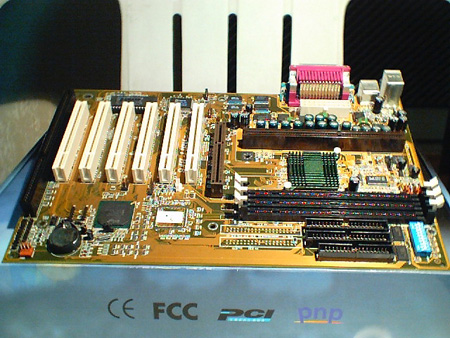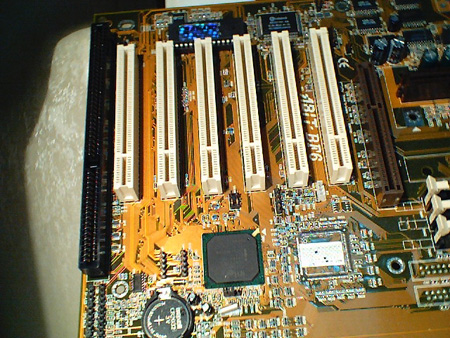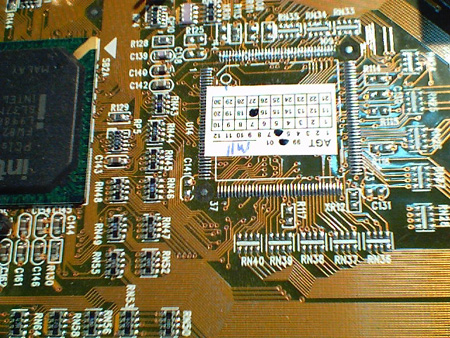|

This is Abit's BF6. It is based on Intel's
ancient 440BX chipset. With newer chipsets from Via (Apollo Pro
133 and 133a) and Intel (i810, i815, i820 and i840), you'd think
that the 440BX would slowly die an agonizing death. It's
interesting though that this 2 year old is still alive and
kicking everyone else's butt. I guess chipsets are like wine
too. The more they mature, the better they become. Click here
if you want the full rundown on features.
Abit, being known worldwide for it's tweakability surely doesn't
let us down with this motherboard. Featuring Softmenu III, it
lets you adjust Front Side Bus speeds from 84 to 200 in 1Mhz.
increments, while also giving you support for 66, 75 and 83 in
the lower range. It features voltage adjustments from 1.30V to
2.30V, and will show applicable voltage ranges depending on what
processor is installed. Adjustment of the I/O voltage is also
possible with Softmenu III. This is especially useful if you're
trying to overclock other components such as a video card.
It might be of interest to some folks that it DOES support
100Mhz. FSB Coppermine processors (FC-PGA to Slot-1 converter
required for FC-PGA processors). 133Mhz. FSB processors are not
officially supported, but will run in most cases, where only
your AGP bus speed would be out-of-whack since the 440BX only
allows for a 2/3 AGP divider. At 133Mhz., the presence of a 1/4
PCI divider helps keep the PCI bus on the standard 33Mhz. The
440BX also has no support for memory speed adjustments, as
opposed to the Via Apollo Pro 133 and 133a chipsets that let you
adjust memory speeds to either -33, +33 or the same as your FSB
speed.

The Abit BF6 sports a 1/6/1 (ISA, PCI, AGP) slot
configuration. The ISA slot, though a relic by today's
standards, was still included with the design to accomodate
those using older network interface cards, modems, and sound
cards. 6 PCI slots are included which is a good decision on
Abit's part. People who like to stuff their PC with all sorts of
components won't be disappointed with this setup since a lot of
component manufacturers design their peripherals for the PCI
bus. The AGP slot is pretty much standard on today's
motherboards where no integrated video exists. It supports 2x
AGP which should do well for most of today's applications and
games.

Since the BF6 is really just a UDMA66-crippled
version of the Abit BE6-II, it was no surprise to find one of
the chips missing from the board. This one, where they stuck the
warranty, is used to house the Highpoint 366 UDMA66 Controller
on the BE6-II. Speaking of the sticker, I would've preferred
them to place the thing on the underside of the motherboard, if
only for aesthetic reasons.
|